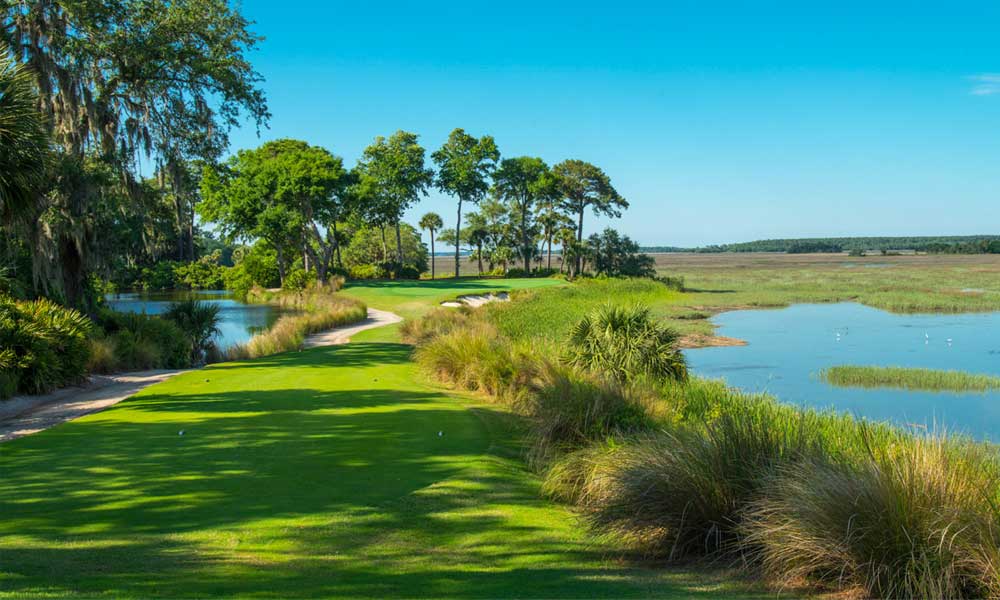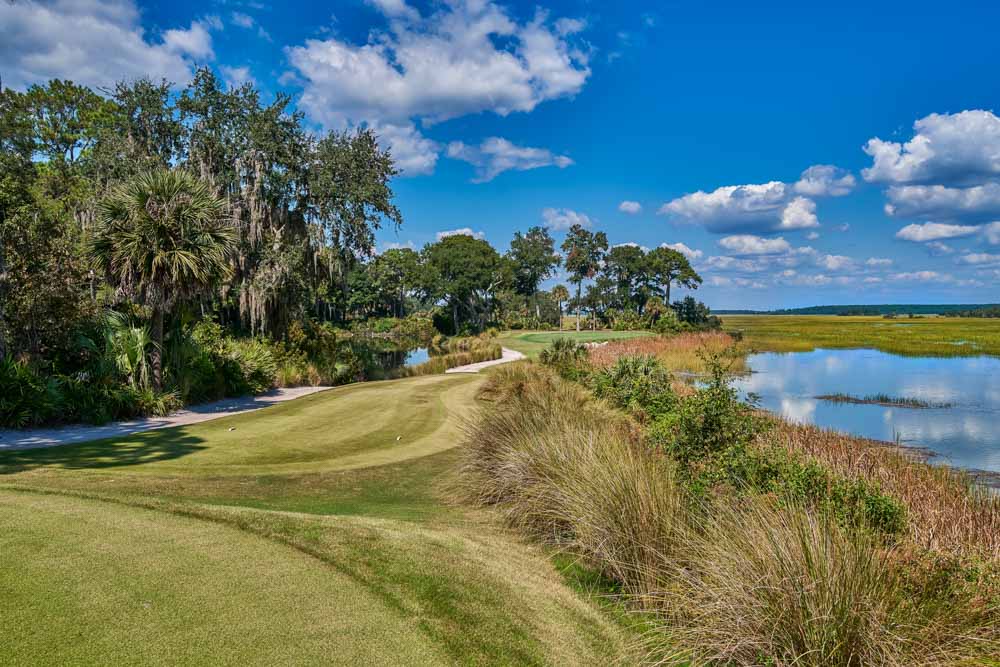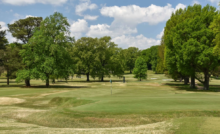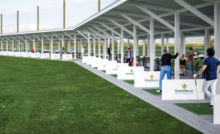Old Tabby Links: A Premier Model of Environmental Stewardship in Golf Course Design


Old Tabby Links
Nestled within the stunning natural landscape of Spring Island, South Carolina, Old Tabby Links golf course is a remarkable example of how golf courses can harmonize with their surroundings while providing a unique and enjoyable experience for players. Designed by the legendary Arnold Palmer and Ed Seay, Old Tabby Links is not just a golf course; it’s an embodiment of a commitment to environmental stewardship and a model for other courses aiming to embrace sustainable practices.
The Unique Landscape of Old Tabby Links
Since its inception in 1993, Old Tabby Links has been dedicated to integrating the golf experience with the breathtaking natural environment of Spring Island. This private course is set amid a 1,200-acre nature preserve, surrounded by 3,500 acres of marshland, which creates a picturesque backdrop that is both secluded and serene. As golf course professionals, we know the importance of location and landscape in providing a memorable golfing experience. Old Tabby’s routing weaves through a 150-year-old live oak forest and transitions to former quail-hunting pastures, showcasing the stunning diversity of the Lowcountry ecosystem.
The course measures 7,135 yards from the longest tees and presents a par of 72. The design cleverly incorporates natural elements, ensuring that neither homes nor other fairways are visible from many holes. This commitment to preserving the natural scenery is not merely an aesthetic choice but a strategic decision that enhances playability while promoting the natural beauty of the area.


Environmental Stewardship: A Commitment to Sustainability
Old Tabby Links has long been recognized for its commitment to environmental stewardship. The course has been involved with the Audubon Cooperative Sanctuary Program for Golf (ACSP) since 1999, earning recertification in 2019 for the 20th consecutive year. This prestigious designation is held by only 784 courses worldwide and underscores the course’s dedication to protecting the environment while enhancing the natural heritage of golf.
This commitment to sustainability is evident in the thoughtful design choices made by Palmer and Seay. The course has been strategically designed to blend seamlessly into its natural surroundings. The recent renovation in 2012 further enhanced these efforts. With the guidance of the Arnold Palmer Design Company, the course underwent significant upgrades, including the re-grassing of greens and the construction of more natural bunkers that improve playability while minimizing environmental impact.
The Renovation: Enhancing Playability and Eco-Friendliness
The 2012 renovation was a substantial investment in the future of Old Tabby Links. The lead architect on the project, Brandon Johnson, oversaw the installation of a new, state-of-the-art irrigation system that drastically improved course conditions while conserving water. The new system has more than doubled the number of sprinkler heads to almost 3,000, reducing watering time significantly and shrinking the total irrigated turf. This allows for wider fairways, creating more forgiving tee shots and multiple approach angles to the greens.
The incorporation of a sand cap allows the course to play firm and fast, an essential feature that many players appreciate. Furthermore, the design of the course has been updated to provide a more strategic and enjoyable golfing experience. The 17th hole, regarded as one of Palmer’s finest par 3s, challenges golfers with its unique location on a narrow peninsula bordered by a spring-fed pond and the Chechessee River, making it a memorable experience for players.
Wildlife Integration: A Living Ecosystem
One of the most remarkable aspects of Old Tabby Links is its integration with local wildlife. The wetlands surrounding the course support over 600 species of flora and a variety of fauna, including wild turkeys, deer, bobcats, and nesting bald eagles. This vibrant ecosystem is a testament to the course’s commitment to preserving the natural environment and provides a unique experience for both players and residents.
The design philosophy emphasizes coexistence with nature. For instance, the course layout ensures that golfers often encounter wildlife during their rounds. The charming presence of herons, anhingas, and egrets creates a captivating atmosphere that enhances the golfing experience. This integration of wildlife not only enriches the course but also serves as an educational opportunity for players to appreciate the natural beauty surrounding them.
Community and Collaboration
The residents of Spring Island take pride in their community’s nature-first philosophy. This commitment is reflected in the development plan, which limits the size of the community to just 410 families, ensuring that homes remain discreetly integrated into the landscape. The absence of paved roads and the requirement for a “nature curtain” of native vegetation around homes contribute to the overall aesthetic and ecological integrity of the area.
Old Tabby Links serves as a model for collaboration between golf course designers, community residents, and environmental organizations. The efforts made to preserve and enhance the natural environment are commendable and should serve as an inspiration for golf course professionals across the industry.
The Future of Golf Course Design
As we look to the future of golf course design, Old Tabby Links sets a benchmark for how courses can operate sustainably while providing an exceptional golfing experience. The lessons learned from its development, renovation, and commitment to environmental stewardship can guide other courses in their pursuit of excellence.
In a world where the demand for sustainable practices is increasing, Old Tabby Links exemplifies how golf courses can thrive while preserving the natural landscape. By prioritizing eco-friendliness, incorporating wildlife conservation efforts, and engaging with the local community, golf courses can create unique experiences that resonate with players and enhance their appreciation for nature.
As golf course professionals, we have the responsibility to consider the long-term impacts of our designs and management practices. Old Tabby Links is a shining example of how we can innovate and adapt to ensure that golf remains a sport that respects and preserves the environment.
In conclusion, Old Tabby Links is more than just a golf course; it is a testament to the possibilities that exist when we prioritize the environment in our designs. As we continue to develop and manage golf courses around the world, let us take inspiration from Old Tabby’s commitment to sustainability, community, and the natural beauty that defines the game of golf.
Recent Posts
Memphis Country Club: A Golfer’s Study in Precision and Tradition
If you have ever teed it up at Memphis Country Club, you know this isn’t…
Foley Company attains GCSAA Silver Partner Status
Foley Company, a leader in turf equipment innovation and technology, affirms its support of the…
Harrell’s continues longstanding support of the GCSAA Foundation
Harrell’s LLC, a leading distributor of customized agronomic products for turfgrass since 1941, has donated…
City of Orlando Announces New State-of-the-Art Driving Range at Dubsdread Golf Course
The City of Orlando is excited to announce the construction of a brand-new, state-of-the-art driving…
Discover Puerto Rico for Great Golf Trips and After-Round Activities, Amenities
Golfers cannot live by the game alone which is why Puerto Rico provides the perfect…
Q&A with a Multi-talented Golf Course Architect – Part 2: Making the Rounds – Installment 39
This column features recollections of the author’s 37 years as a golf writer. These installments…


